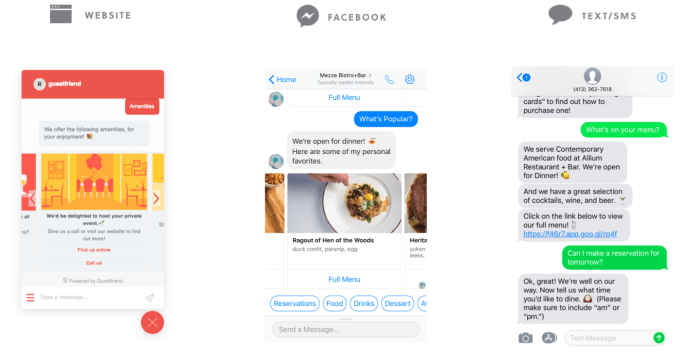According to Parsley Health, the average adult spends 19 minutes with their physician every year. Seventy percent of the time, these short visits result in the prescription of a medication.
“According to the CDC, 70% of diseases in our country are chronic and lifestyle-driven,” said Parsley Health founder and CEO Dr. Robin Berzin. “And yet instead of addressing the root causes of health problems, medicine’s toolkit is limited to prescriptions and procedures, driving up costs while the average person gets sicker. The answer isn’t just another pill.”
Parsley Health, an annual membership service ($150/month), reimagines what medicine can be. The company focuses on the cause of an illness rather than simply throwing Band-Aids at the problem. But in order to do this, your doctor needs far more than 19 minutes of your time each year.
Today, Parsley announced the close of a $10 million Series A funding led by FirstMark Capital, with participation from Amplo, Trail Mix Ventures, Combine and The Chernin Group. Individual investors such as Dr. Mark Hyman, M.D., director of the Cleveland Clinic Center for Functional Medicine; Nat Turner, CEO of Flatiron Health; Neil Parikh, co-founder of Casper; and Dave Gilboa, co-founder of Warby Parker, also invested in the round.
As part of the financing, FirstMark Capital partner Catherine Ulrich will join the board.
Here’s how Parsley works:
When a user first signs up online, they enter in a wide range of data about themselves, from family health history to past procedures to symptoms and lifestyle. The user then schedules their first visit with their new doctor, which will last for 75 minutes, during which time the doctor will exhaustively go through that information to download a full picture of that patient’s health.
After that visit, the user has full transparency into their medical data and the doctor’s notes. The patient also leaves with a health plan, including lifestyle nutritional advice, and access to their own health coach. Parsley also writes prescriptions, when necessary, and refers patients to top-of-the-line specialists, if needed.
Membership includes five annual visits with their doctors (which rounds out to about four hours), as well as five sessions with their certified health coach. These coaches help patients stay on their health plan, whether it’s advice on physical exercise or getting better sleep or finding take-out places and menu items near their office to eat healthier meals.
Throughout a patient’s membership, they have full access to their medical data and doctor’s notes online, as well as unlimited direct messaging with their doctor. At Parsley, there is always a doctor on call to answer questions about semi-urgent issues like a UTI or a sinus infection.
All of Parsley’s doctors and health coaches are full-time employees at Parsley, and Dr. Berzin told TechCrunch that the company sees a lot of inbound from doctors who want to spend more time with patients and help solve the root of their problems.
Parsley also trains their doctors in functional medicine, which uses a systems-biology approach to better resolve and manage modern chronic disease, as part of Parsley’s clinical fellowship, where they are trained in evaluating thousands of biomarkers to diagnose and treat diseases at their origin.
Parsley is not the first in the space. Forward and One Medical also look to change the way that healthcare is provided in this country, while NextHealth Technologies is focused on supplemental treatments like IV treatments and cryo.
“When I tell people about Parsley, they say ‘wow! That’s what medicine should be’,” said Dr. Berzin. “People are really searching for something better than feeling like they’re paying more and more for healthcare while getting less and less. People are excited to invest in their health and wellness and to have a team that’s working to care for them.”
Parsley has clinics in San Francisco, New York and Los Angeles.
Editor’s Note: An earlier version of this article incorrectly stated that Parsley Health costs $150/year.
Powered by WPeMatico



 It’s called Crypto Rider, predictably, and is very much a spawn of the popular Line Rider type of game, though (hopefully) different enough that there won’t be any cease and desists forthcoming.
It’s called Crypto Rider, predictably, and is very much a spawn of the popular Line Rider type of game, though (hopefully) different enough that there won’t be any cease and desists forthcoming.